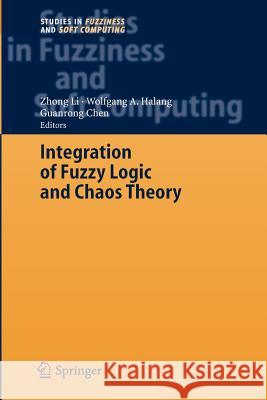Integration of Fuzzy Logic and Chaos Theory » książka
Integration of Fuzzy Logic and Chaos Theory
ISBN-13: 9783642065941 / Angielski / Miękka / 2010 / 626 str.
The 1960s were perhaps a decade of confusion, when scientists faced d- culties in dealing with imprecise information and complex dynamics. A new set theory and then an in?nite-valued logic of Lot? A. Zadeh were so c- fusing that they were called fuzzy set theory and fuzzy logic; a deterministic system found by E. N. Lorenz to have random behaviours was so unusual that it was lately named a chaotic system. Just like irrational and imaginary numbers, negative energy, anti-matter, etc., fuzzy logic and chaos were gr- ually and eventually accepted by many, if not all, scientists and engineers as fundamental concepts, theories, as well as technologies. In particular, fuzzy systems technology has achieved its maturity with widespread applications in many industrial, commercial, and technical ?elds, ranging from control, automation, and arti?cial intelligence to image/signal processing, patternrecognition, andelectroniccommerce.Chaos, ontheother hand, wasconsideredoneofthethreemonumentaldiscoveriesofthetwentieth century together with the theory of relativity and quantum mechanics. As a very special nonlinear dynamical phenomenon, chaos has reached its current outstanding status from being merely a scienti?c curiosity in the mid-1960s to an applicable technology in the late 1990s. Finding the intrinsic relation between fuzzy logic and chaos theory is certainlyofsigni?cantinterestandofpotentialimportance.Thepast20years have indeed witnessed some serious explorations of the interactions between fuzzylogicandchaostheory, leadingtosuchresearchtopicsasfuzzymodeling of chaotic systems using Takagi-Sugeno models, linguistic descriptions of chaotic systems, fuzzy control of chaos, and a combination of fuzzy control technology and chaos theory for various engineering practices.











